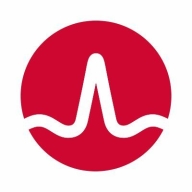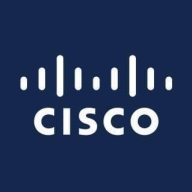

DX Unified Infrastructure Management and Meraki Dashboard compete in infrastructure management and monitoring. DX Unified Infrastructure Management holds the upper hand in monitoring capability, while Meraki Dashboard is favored for its user-friendly management and visualization.
Features: DX Unified Infrastructure Management provides extensive monitoring probes, agent-based technology for non-Java systems enhancing stability, and significant scalability with diverse OS support. Meraki Dashboard offers centralized management with layer 7 filtering, a simplified VPN setup, and extensive integration capabilities.
Room for Improvement: DX Unified Infrastructure Management could improve in customer support, increase VMware monitoring efficiency, and offer better filtering and maintenance mode. Meraki Dashboard needs improvement in licensing complexity, VPN client functionality, and enhanced user interface guidance.
Ease of Deployment and Customer Service: DX Unified Infrastructure Management supports hybrid, on-premises, and public cloud environments but faces criticism in customer service post-CA acquisition. Meraki Dashboard supports private and public cloud deployments and is praised for straightforward licensing and responsive technical support.
Pricing and ROI: DX Unified Infrastructure Management is expensive but its functionality often leads to a positive ROI. Meraki Dashboard is considered costly but offers pricing flexibility and device licensing options which users find beneficial in terms of operational simplicity and network visibility.
Improving direct support for end customers, similar to Microsoft’s model, would be beneficial.
When our site went down, Cisco's technical support was very responsive and effective, so I would rate them nine out of ten for their support.
The support response time can be slow, sometimes taking up to fifteen hours.
They are instantly available for technical support from Meraki Dashboard.
The solution helps with capacity management, enabling us to determine when we need to scale up the network.
We have not encountered any downtime related to the Meraki cloud feature in the last five years.
Better support and more accessible resources are crucial.
Improving AI could be a significant role-changer for many aspects.
The cameras are not connected through Meraki, but all other devices are on Meraki networks.
I would like to enhance my expertise on Cisco Umbrella and Cisco M, which is an endpoint security management tool.
The pricing of DX Unified Infrastructure Management is high and often a concern for customers.
The cost of the Meraki solution is high, which may not be affordable for smaller companies, especially in developing countries.
If we involve a third-party vendor, the price will definitely go up.
DX Unified Infrastructure Management offers visibility into network activities, integration capacity, and enhances monitoring at the core and application levels.
With the detailed visibility feature of Meraki Dashboard, I get connected clients information, including how much data each client downloaded and what applications they accessed.
Meraki Dashboard offers an exceptional centralized management solution that allows easy updates and monitoring of various network features, including bandwidth usage and content filtering.
You can also implement some security measures over Meraki Dashboard, such as Cisco Umbrella, which is a powerful DNS security tool, and you can manage FTD firewalls through Meraki Dashboard, making it very beneficial.
| Product | Market Share (%) |
|---|---|
| Meraki Dashboard | 1.0% |
| DX Unified Infrastructure Management | 0.6% |
| Other | 98.4% |


| Company Size | Count |
|---|---|
| Small Business | 29 |
| Midsize Enterprise | 20 |
| Large Enterprise | 80 |
| Company Size | Count |
|---|---|
| Small Business | 22 |
| Midsize Enterprise | 13 |
| Large Enterprise | 25 |
DX Unified Infrastructure Management is the only solution that provides an open architecture, full-stack observability and zero-touch configuration for monitoring traditional data center, public cloud, and hybrid infrastructure environments.
Designed to ensure an optimal end-user experience, this solution provides a modern HTML5 operations console that makes it easy and fast for today’s IT teams to implement, use, and scale – leading to faster time to value.
Meraki Dashboard is a comprehensive cloud-based platform that offers centralized management and control for all Meraki networking and security products. It provides a user-friendly interface, allowing administrators to easily monitor and configure their network infrastructure from anywhere. With real-time visibility, troubleshooting becomes effortless, ensuring optimal performance and minimizing downtime.
The intuitive dashboard offers a holistic view of the network, enabling quick identification of potential issues and proactive measures. It simplifies network deployment and scaling, with zero-touch provisioning and automatic firmware updates. The robust security features include advanced threat protection, content filtering, and VPN connectivity.
Meraki Dashboard also offers powerful analytics and reporting capabilities, providing valuable insights into network usage, application performance, and user behavior. With its seamless integration and scalability,
Meraki Dashboard is the ideal solution for organizations of all sizes, ensuring efficient network management and enhanced productivity.
We monitor all Network Monitoring Software reviews to prevent fraudulent reviews and keep review quality high. We do not post reviews by company employees or direct competitors. We validate each review for authenticity via cross-reference with LinkedIn, and personal follow-up with the reviewer when necessary.